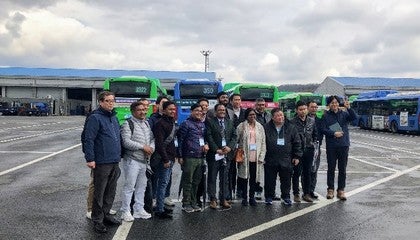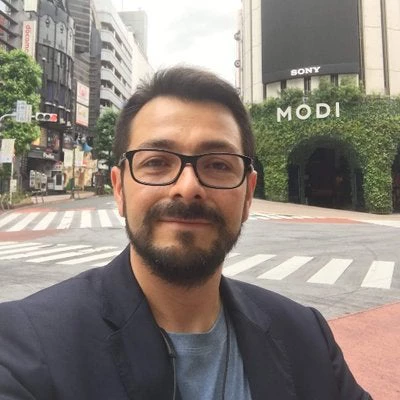Earlier this year, we traveled to Seoul to take part in two Transportation Strategy Workshops organized by several of our partners on the ground, focusing primarily on the topic of Bus Rapid Transit. Considering Seoul’s success in developing one of the most comprehensive and efficient transport systems in the world over just a few decades, we were eager to learn more about the city’s experience.
Here are the five main lessons we took away with us:
Participants presenting a rapid assessment exercise

Participants visiting one of the bus depots in Seoul

- The success of mass transit in Seoul was not a given. Like other booming urban economies, the city has seen a dramatic increase in motorization starting from the 1980s, with the number of cars rising from less than 50,000 units to more than 3 million in thirty years (130x). Yet today, private cars account for just 23% of all trips, compared to a modal share of more than 65% for public transport. If you look only at public transport trips, nearly 60% are taken on the 338-km subway network. The remainder is handled by the extensive, high-capacity bus network, which includes 353 routes and more than 7,400 buses, with nearly 1/4th of them circulating on BRT corridors. These results are no miracle: the city is clearly willing to put adequate resources into the system, and dedicates 60% of its annual transport budget to improving the mass transit network.
- Everyone can design a masterplan – implementation is where many cities face most difficulties. The developing cities of today share many of the urban transport woes experienced by Seoul in the 1990s: rising congestion, high levels of road crashes, pollution, and low-quality and overcrowded bus routes. And just like Seoul, many of them have tried developing urban transport master plans to inform and prioritize mass transit development. Unfortunately, planners often end up shelving these plans due to ever-changing political economies, and few of the proposed initiatives ever come to life. Seoul, on the other hand, has made progress implementing the vision in its master plans. So why has the Korean capital succeded where so many others are struggling? Although transport officials in the city have endured their fair share of frustrations, the key to their success seems to reside in persistence, failures, adjustments—and, most importantly, in the development of flexible, actionable implementation strategies.
- Cities shouldn’t be biased in favor of just one mode or one technology. One of the most striking features of Seoul’s public tranport system is hierarchical integration and complementarity between rail and bus modes. Rather than taking a one-size-fits-all approach, the city has carefully planned the optimization of its rail and bus networks, implemented a privately-concessioned, city-wide fare collection, fleet management and user information systems, and, for buses, developed different typologies of corridors based on passenger needs and on the constraints of the local environment. This experience could encourage planners and decision makers to give each and every available transport technology a fair chance, and to pick out whichever solution brings the highest socioeconomic benefits at the lowest cost. In many cases, this could lead them to prioritize bus services as a way to boost the quality of public transport within a short implementation timeframe.
- Building the infrastructure is just the beginning. To keep buses running smoothly over time, a solid institutional and financial framework is critical. A proper institutional framework with the technical capacity to monitor and manage operations and plan for system expansion is at the heart of a well-functioning bus network. Quality-incentive or performance-based contracts, in particular, can help maintain high service standards and protect the bottom line of well-performing operators. Moreover, the bus reform is an ongoing process: Seoul continues to working to address the remaining issues in the bus network, contracting, and integration with its urban rail system.
- There needs to be a strategy in place that addresses the needs of incumbent incumbent operators. In Seoul, the network development and bus reform transcend the city boundaries, as many commuters in the neighboring Gyeonggi province use public transport to their jobs in Seoul. This has required extensive coordination efforts between the two jurisdictions, to ensure that buses registered either with Seoul or Gyeonggi administration would serve the interest of the citizens in both. For countries where informal bus operators exist, the visit discussed how bus reforms must include a core component that allows putting in place a comprehensive strategy to support the transition of incumbent operators into the new scheme. In this case, the strategy typically considers different support mechanisms to ensure existing operators have a choice on whether to transition into the new system or negotiate exit strategies. Exit strategies may include compensation and scrapping strategies to limit oversupply and overlaps.
After visiting Seoul, many of our fellow workshop participants circled back to the initial discussion: putting public transport on an upward trend demands a sustained political commitment, a realistic budget, and continued support from a project champion. But Seoul also taught us that efficient public transport doesn’t always have to involve cutting-edge technology or big, shiny infrastructure. In many cases, the solution is less expensive than one might think: give physical, institutional and fiscal priority to urban transport’s most overlooked workhorse: the bus.
BRT Line in Gangnam Gu, Seoul

Panoramic view of Seoul Station

Acknowledgements:
With support from the World Bank’s trust fund for green growth, Korea Green Growth Trust Fund -KGGTF, the World Bank’s Transport Global Practice – East Asia and the Pacific Unit has partnered with CityNet, a Seoul-based regional network of cities, to facilitate knowledge sharing and capacity building among Asian cities currently planning, implementing, and operating BRT systems. This initiative led in 2017 to the creation of the CityNet-World Bank BRT Cities Network. This BRT Network was inspired by similar associations in LAC and aims at facilitating knowledge sharing and capacity building across cities planning, implementing and operating BRT systems. The CityNet Secretariat is headquartered in Seoul since 2013, after being based in Yokohama, Japan, for 20 years.
These series of Transportation Strategy Workshops have been hosted by the Seoul Metropolitan Government and the Seoul Human Resources Development Center, delivering hands-on, practical training to decision makers. The workshops have brought to Seoul government representatives from Asian WB client cities who have exchanged knowledge and experienced in first-hand Seoul’s Hierarchically Integrated Transit System (HITS).
About KGGTF:
The Korea Green Growth Trust Fund is a partnership between the World Bank Group and the Republic of Korea, established in 2011 to support client countries as they shift to a green development path. Both partners share a common goal to reduce poverty and promote shared economic prosperity in an environmentally responsible and socially inclusive way. The Trust Fund finances on-the-ground programs as well as knowledge exchange activities, and to date has funded 132 programs worldwide. Based on strong performance, as well as increasing demand for collaborative development implementation programs, the fund was replenished at the end of 2015, growing from US$40 million to US$88 million to fund programs through 2021. For more information about the KGGTF please visit www.wbgkggtf.org



Join the Conversation